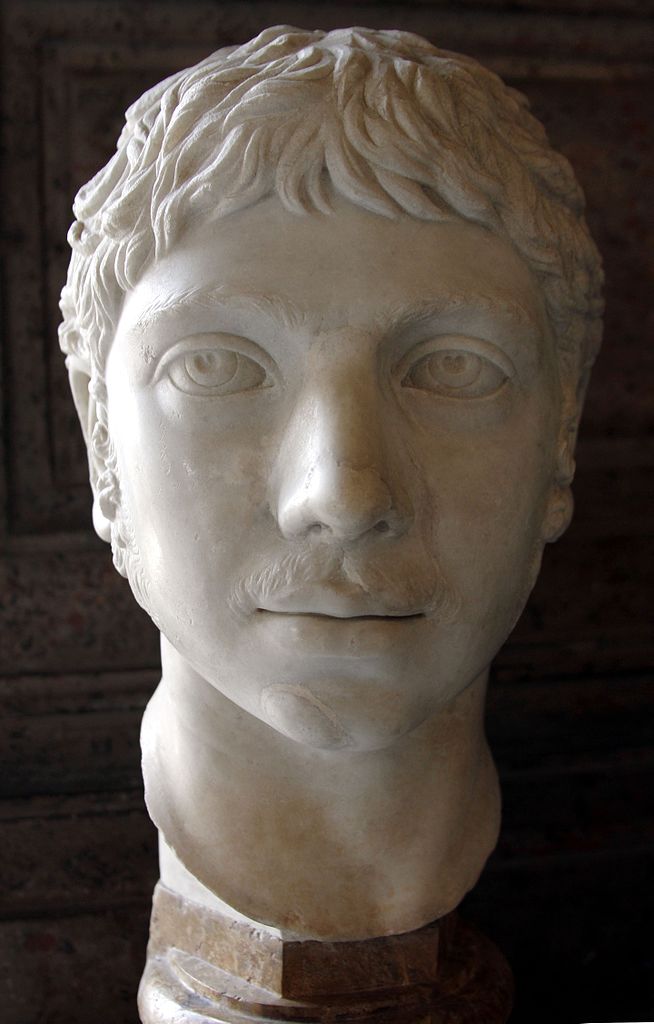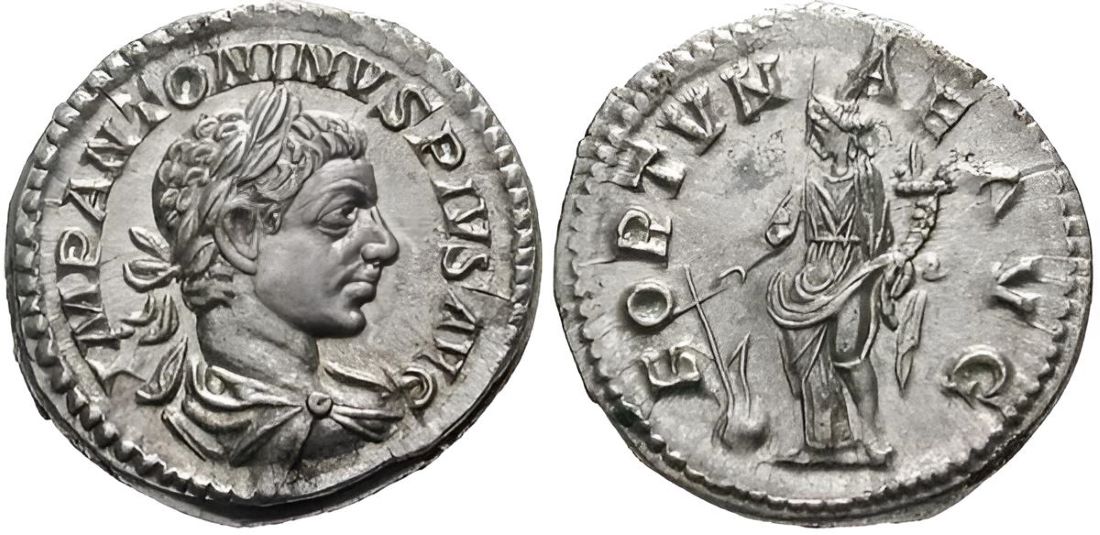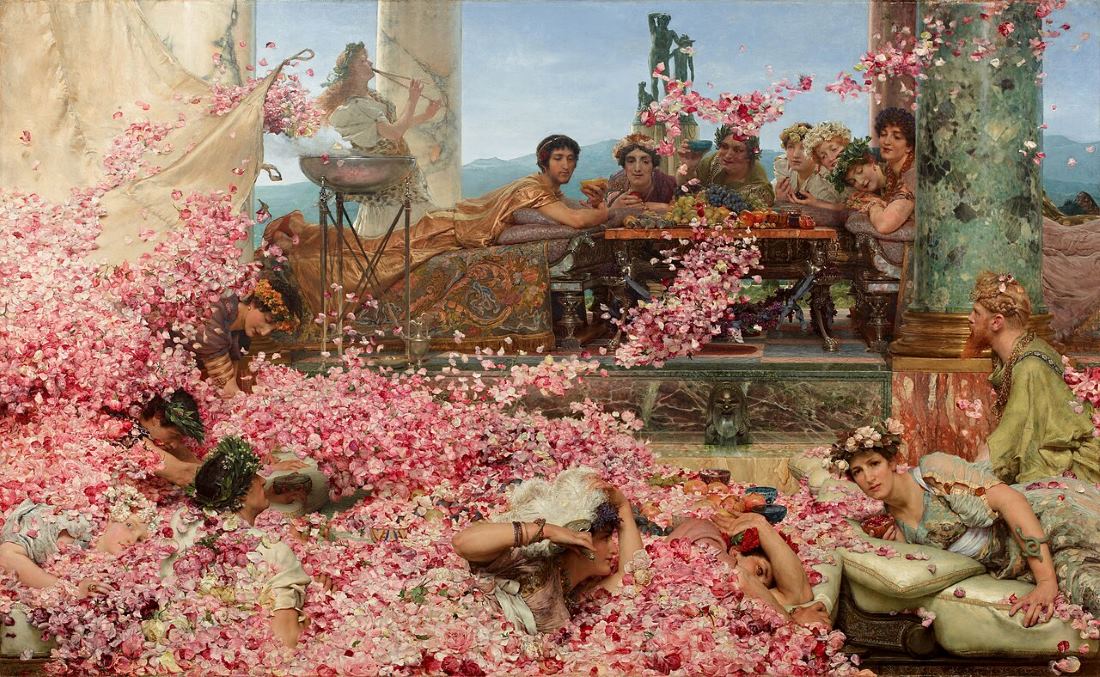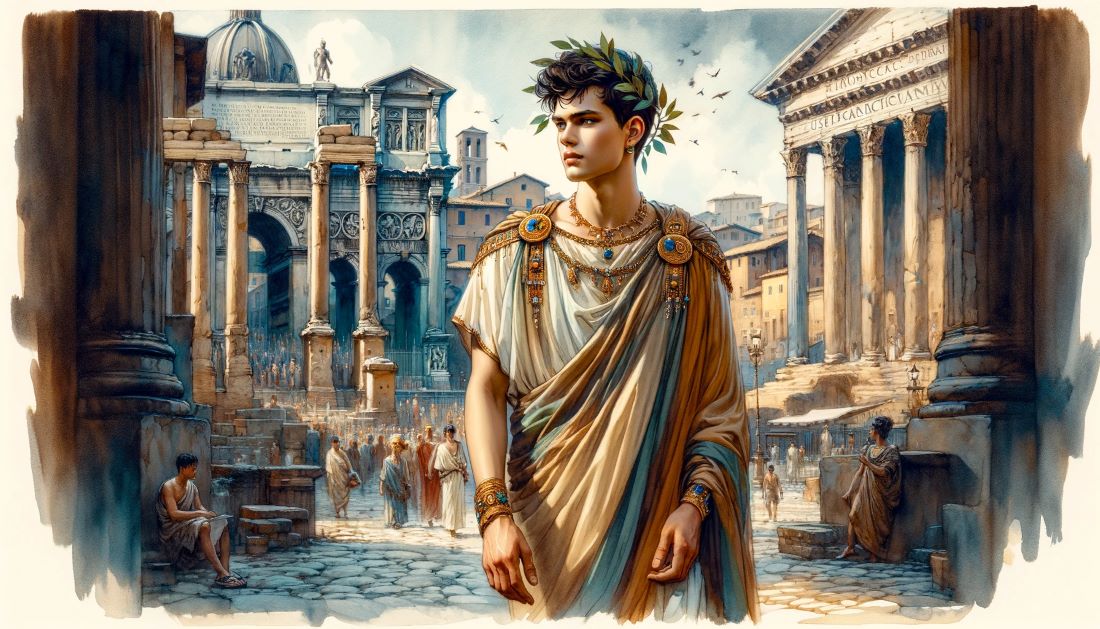Elagabalus, fully named Marcus Aurelius Antoninus Augustus, holds a unique place in the long history of the Roman Empire as one of its most extravagant and controversial rulers. Born in 204 AD, he ascended to the throne at the tender age of 14, marking the start of a reign characterized by unprecedented eccentricity and scandal. This teenage emperor’s short rule, lasting from 218 to 222 AD, was filled with lavish spectacles, religious innovations, and the blurring of traditional Roman values, capturing the imagination of both his contemporaries and modern historians alike.
Ascension of a Teen Emperor
Elagabalus, born Varius Avitus Bassianus and later known by his regnal name Marcus Aurelius Antoninus Augustus, was a figure of intrigue and complexity in the annals of Roman history. His adoption of the name Elagabalus, derived from the deity El-Gabal whom he fervently worshipped, further illustrates the intertwining of religious devotion and imperial identity in his reign. Originating from a distinguished lineage, he was a member of the Severan Dynasty, which played a pivotal role in the Roman Empire’s history during the 3rd century AD. His connection to the imperial lineage came through his grandmother, Julia Maesa, a powerful and cunning figure who orchestrated his rise to power. Born in Emesa (modern-day Homs, Syria), Elagabalus was initially a priest in the sun god El-Gabal’s cult, from which he derived his name, signifying his deep religious affiliations from a young age.

The young emperor’s ascent to the throne was as dramatic as his subsequent reign. In the year 218 AD, amidst the tumultuous political landscape of the Roman Empire, Julia Maesa skillfully maneuvered her grandson into the position of emperor. Capitalizing on the discontent with the reigning Emperor Macrinus, she leveraged her wealth and influence to mount a military campaign that ultimately saw Elagabalus declared emperor by the Third Legion. At just 14 years old, Elagabalus’s elevation to the highest seat of power was a testament to both his grandmother’s ambition and the unique circumstances of his time, setting the stage for one of the most unconventional reigns in Roman history.
The Eccentric Reign of Elagabalus
Elagabalus’s reign was marked by a series of eccentric and scandalous acts that left an indelible mark on the history of the Roman Empire. After he arrived in Rome, he quickly set about establishing his religious authority, importing the worship of his god, El-Gabal, and attempting to elevate it above the traditional Roman pantheon. This religious fervor extended to his personal life, most notably in his marriage to a Vestal Virgin. Defying Roman law and tradition, he proclaimed, “There is nothing more appropriate than the marriage of a priest to a priestess,” thus profaning one of Rome’s most sacred institutions. His obsession with sexuality was manifest in various public and private acts, including his infamous emulation of a woman, where he dressed in female attire and led Rome’s prostitutes in a parade through the Forum, challenging the very fabric of Roman gender norms and societal expectations.

Elagabalus’s extravagance was not limited to his personal and religious life; his love for spectacle permeated his reign. He famously organized lavish games where ships were made to sail on a sea of wine, showcasing his disregard for the economic stability of the empire in favor of opulence and excess. His rule was characterized by an unbridled hedonism and a desire to shock and awe, which ultimately alienated the traditional Roman elite and the military. Aware of the precarious nature of his position, Elagabalus reportedly prepared for an uncertain future, but nothing could have prepared him for the violent end that awaited him. In 222 AD, his own Praetorian Guard, disillusioned by his unconventional and lavish ways, turned against him, leading to his assassination and a gruesome demise. His death marked the end of one of the most controversial and unconventional reigns in Roman history, a reign that was as short-lived as it was flamboyant.
The Roses of Heliogabalus
Elagabalus’s reign, infamous for its eccentricities, included one of the most bizarre episodes that would later inspire the world of art. In a display of both opulence and macabre humor, he nearly suffocated his guests with a deluge of petals, a spectacle that showcased his extravagant and unpredictable nature. This peculiar event captured the imagination of Sir Lawrence Alma-Tadema, an Anglo-Dutch artist renowned for his classical depictions. In 1888, Alma-Tadema immortalized this moment in “The Roses of Heliogabalus”, a painting that depicts the young Roman emperor in the midst of orchestrating this floral avalanche at a banquet. The artwork vividly brings to life the extravagance and capriciousness that defined Elagabalus’s short but memorable rule.

The decadence of an Empire
Elagabalus’s tenure as emperor serves not only as a study of an individual’s eccentricity but also as a mirror reflecting the broader decadence and instability engulfing the Roman Empire during this period. His reign, characterized by personal excesses and unconventional behavior, underscores a recurring theme of psychological instability among Roman rulers, symptomatic of an empire grappling with its own identity and legacy. This pattern of leadership, oscillating between brilliance and madness, reveals the complex dynamics of power, tradition, and innovation in an empire at the crossroads of history. Elagabalus’s life and rule encapsulate the challenges of governance amidst the decadent opulence and moral ambiguity that increasingly came to define Rome’s imperial phase.
Historical Challenge: Can You Conquer the Past?
Answer more than 18 questions correctly, and you will win a copy of History Chronicles Magazine Vol 1! Take our interactive history quiz now and put your knowledge to the test!

